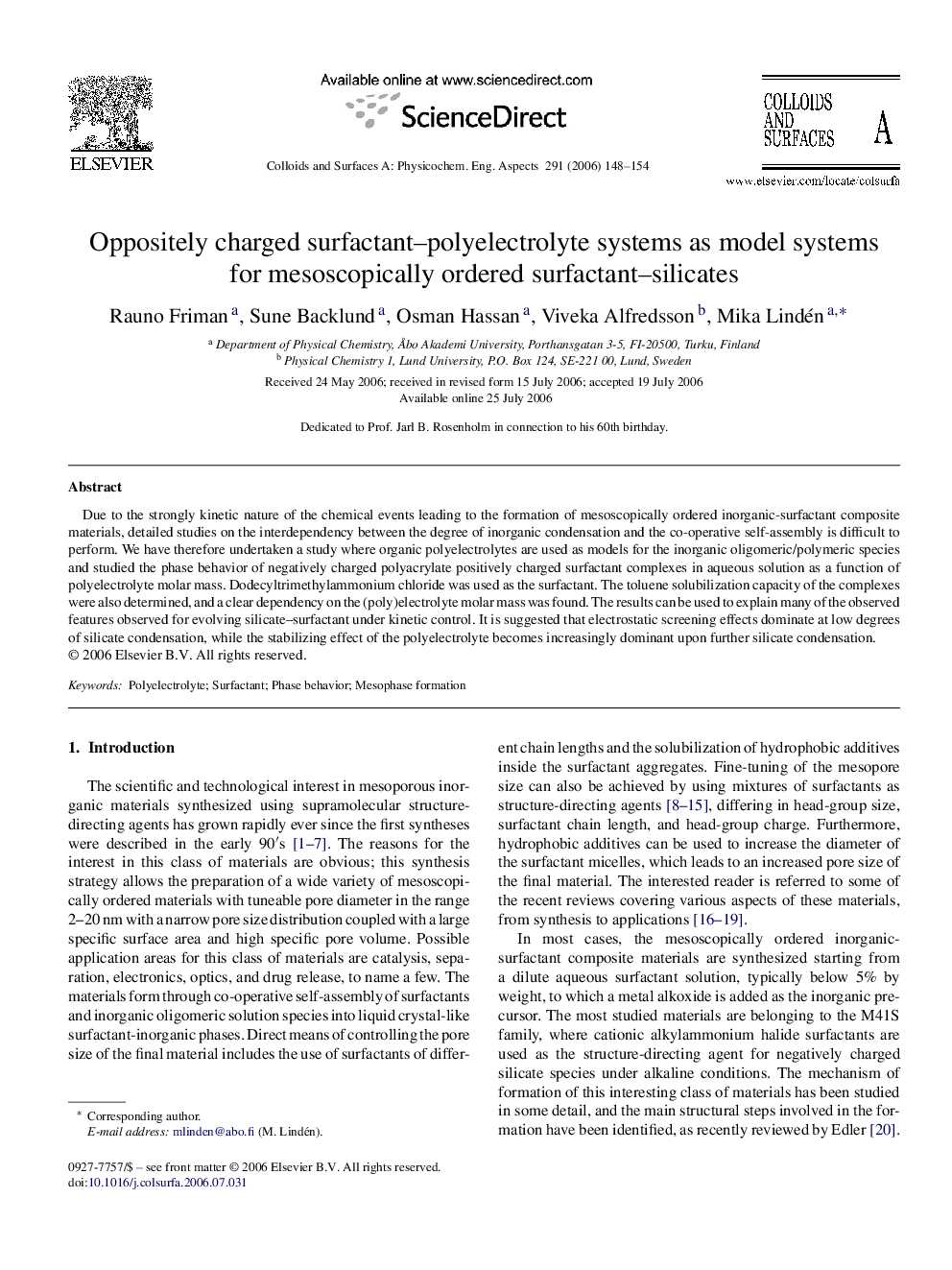| Article ID | Journal | Published Year | Pages | File Type |
|---|---|---|---|---|
| 597924 | Colloids and Surfaces A: Physicochemical and Engineering Aspects | 2006 | 7 Pages |
Due to the strongly kinetic nature of the chemical events leading to the formation of mesoscopically ordered inorganic-surfactant composite materials, detailed studies on the interdependency between the degree of inorganic condensation and the co-operative self-assembly is difficult to perform. We have therefore undertaken a study where organic polyelectrolytes are used as models for the inorganic oligomeric/polymeric species and studied the phase behavior of negatively charged polyacrylate positively charged surfactant complexes in aqueous solution as a function of polyelectrolyte molar mass. Dodecyltrimethylammonium chloride was used as the surfactant. The toluene solubilization capacity of the complexes were also determined, and a clear dependency on the (poly)electrolyte molar mass was found. The results can be used to explain many of the observed features observed for evolving silicate–surfactant under kinetic control. It is suggested that electrostatic screening effects dominate at low degrees of silicate condensation, while the stabilizing effect of the polyelectrolyte becomes increasingly dominant upon further silicate condensation.
